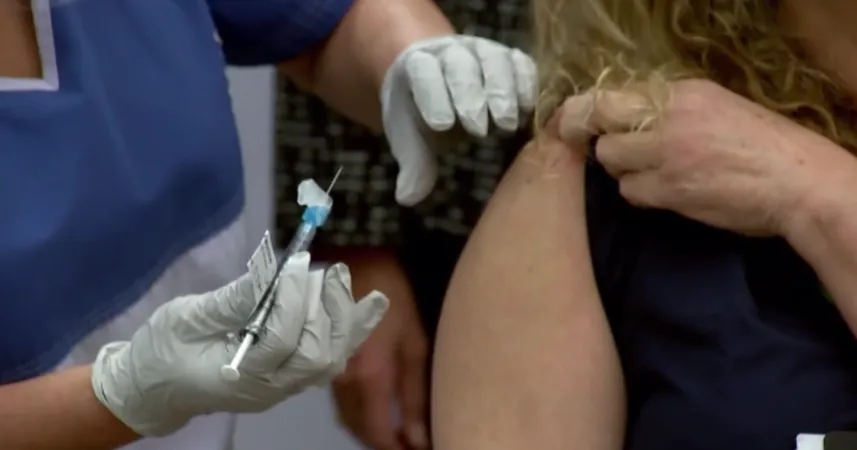
Instagram's New Rules for Teens: Are They Enough to Tackle the Body Image Crisis?
2024-09-23
As a teenager navigating the complexities of social media, Sevey Morton from San Diego reflects on her Instagram journey that began at a mere age of 10. Initially created to connect with friends and follow the latest pop culture trends, that innocent beginning quickly morphed into a source of stress. Now 16, Sevey laments the negative impact of filtered perfection and curated self-images on her mental health, stating, "Being exposed to that at a very young age impacted the way I grew into myself.” She even confesses, “There is a huge part of me that wishes social media did not exist."
Determined to shed light on the prevalent mental health crisis among today’s youth, Sevey's mother, Laura, directed the documentary *Anxious Nation*, which delves into anxiety issues affecting adolescents. The recent announcement by Meta, Instagram’s parent company, regarding new rules for under-18 accounts caught Sevey's attention. While she acknowledges the changes as a positive step, she firmly believes they fall short of addressing the root issues plaguing teen users like her.
Meta's updated regulations grant parents new oversight capabilities: they can now set daily time limits, restrict usage during night hours, and view the accounts their children interact with. Moreover, teen accounts will be automatically set to private, aiming to shield them from sensitive content related to violence or harmful beauty ideals. Interestingly, young users will have to secure parental consent to alter these settings, with the exception of those ages 16 and 17, who can modify their account features independently. However, a glaring loophole remains: teens can easily misrepresent their age, prompting Meta to develop more robust age verification practices.
Despite recognizing that these changes aim to minimize exposure to damaging content, Sevey points out the elephant in the room: “The main problem with Instagram is still body image issues.” This predicament transcends individual experiences, as it highlights a troubling pattern reflected in broader systemic flaws within social media platforms.
Meta’s attempts to mitigate concerns come in light of severe public scrutiny regarding its handling of adolescent safety. Following numerous reports linking Instagram to rising rates of anxiety, depression, and self-harm among young users, the company has faced relentless pressure. Notably, during a Senate hearing in January, CEO Mark Zuckerberg offered apologies to distraught parents whose children had suffered due to the platform.
In a revealing Wall Street Journal investigation from 2021, internal documents from Instagram concluded that one in three teen girls experienced worsened body image issues due to the app. This was a wake-up call that many felt Meta was slow to heed, particularly as it diverted focus on user safety until faced with mounting external pressures.
Amid legislative moves to bolster protections for young users, such as the new Kids Online Safety Act, critics argue Meta's timing to announce these features is indicative of its strategy to quell growing backlash rather than a genuine commitment to user safety. Jim Steyer, founder of the advocacy group Common Sense Media, accused Meta of making "splashy announcements" only when their political standing is threatened.
The social media landscape remains precarious. This summer, U.S. Surgeon General Vivek H. Murthy classified the mental health crisis among young people as an “emergency,” proposing that social media platforms should carry warning labels akin to those on toxic substances. His alarming findings emphasize that teens logging over three hours daily on social media are at a heightened risk of negative mental health outcomes.
For experts like Jon-Patrick Allem from Rutgers School of Public Health, Instagram’s new teen guidelines appear to be “slight modifications” rather than significant reforms, leaving many skeptical of their long-term effectiveness. This sentiment echoes with Stephen Balkam from the Family Online Safety Institute, who underscores the need for transparency in the collection of internal data regarding these new policies.
Recent studies reveal a growing discontent among young adults, with a Harris poll finding that over one-third of Gen Z respondents regretted the existence of Instagram. While platforms like TikTok and X also displayed high levels of disdain, the numbers suggest a significant unresolved crisis within social media spaces.
Even amidst the backlash, Sevey remains tethered to her digital realm, often checking Instagram multiple times a day. She expresses a longing for a phone devoid of social media, where her only distractions could be messaging and photography, yet acknowledges the continuous connection that social media provides, asserting, “If I deleted it, I guarantee I would have it back within 24 hours.”
As the conversation about teen mental health and social media evolves, the question lingers: Will these new rules effectively safeguard young users, or will they merely serve as a band-aid solution to a more significant problem? The future of teen interaction and online safety hinges on forthcoming actions and perhaps more importantly, a collective societal commitment to prioritize mental well-being over digital interaction.





 Brasil (PT)
Brasil (PT)
 Canada (EN)
Canada (EN)
 Chile (ES)
Chile (ES)
 España (ES)
España (ES)
 France (FR)
France (FR)
 Hong Kong (EN)
Hong Kong (EN)
 Italia (IT)
Italia (IT)
 日本 (JA)
日本 (JA)
 Magyarország (HU)
Magyarország (HU)
 Norge (NO)
Norge (NO)
 Polska (PL)
Polska (PL)
 Schweiz (DE)
Schweiz (DE)
 Singapore (EN)
Singapore (EN)
 Sverige (SV)
Sverige (SV)
 Suomi (FI)
Suomi (FI)
 Türkiye (TR)
Türkiye (TR)